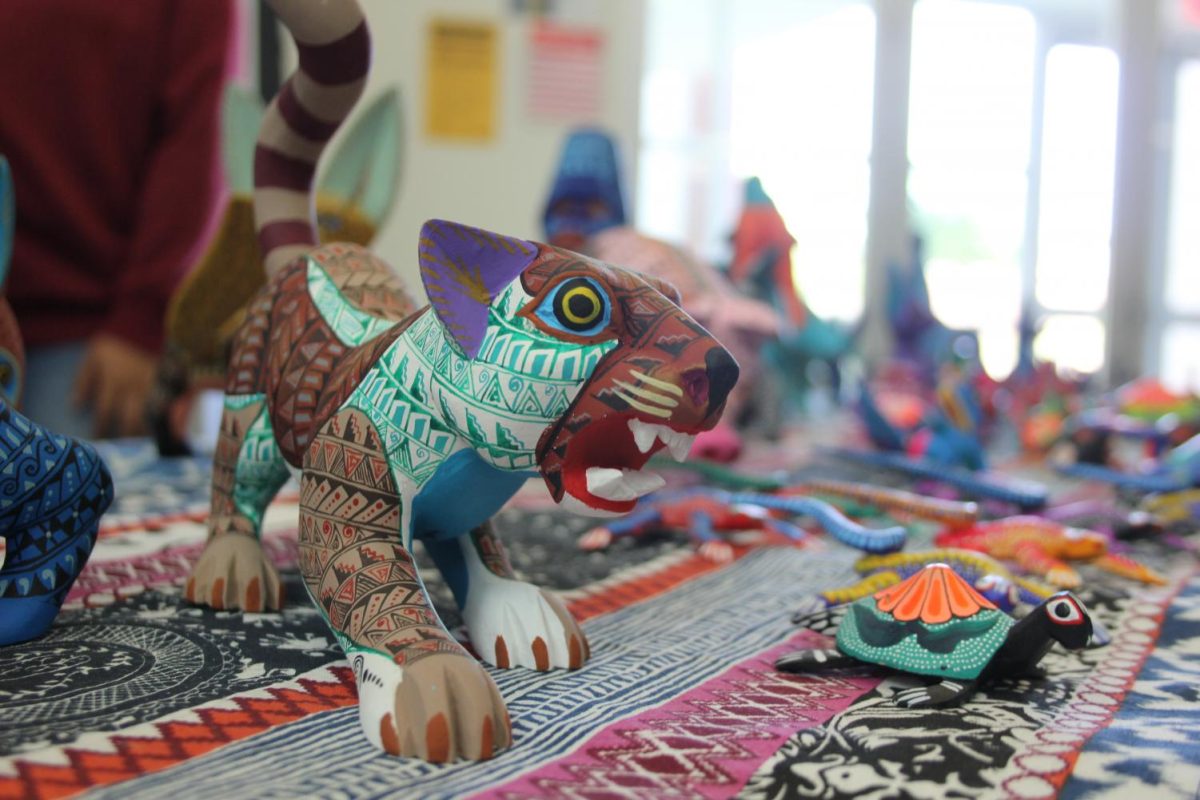Oaxacan artist presents cultural carvings on campus
Carvings painted by Oaxacan artist Alma Arreola on display for view and potential sale on Oct. 10. Arreola’s work is part of an artists’ collective called Ecoalebrijes.
A Oaxacan artist visited Cosumnes River College on Oct. 10 to showcase and sell her art and to give information about her community and what it takes to create her pieces.
Alma Arreola is from the community of Arrazola in Oaxaca, Mexico and has been doing this art form called alebrijes with her husband for the last 20 years. They, together with 12 other families who create this art, form a collective of artists called Ecoalebrijes.
“When you look at a piece of artwork, it’s not just the artwork you see,” Arreola said, through a translator. “It’s more of the family’s story, my inspiration; you get to see something that’s in me.”
Alebrijes is the art of creating brightly colored wooden sculptures. In Oaxaca, they use the wood of the copal tree.
“It’s soft to carve out and it’s the tree that grows naturally in the area,” Arreola said.
CRC English Professor Heather Hutcheson is responsible for helping bring Arreola to the United States. Hutcheson visited Oaxaca five years ago during a sabbatical leave and said she fell in love with the community and the art.
“One of the things that I love about this is that the kids help out by sanding and learning. The men carve and the woman paint, so the whole family is involved and the unity is fantastic,” Hutcheson said.
In Arrazola, 80 percent of the community creates this wood art in order to support themselves and the community. Since they are able to create and sell these pieces in Mexico and the U.S., they are able to stay together instead of coming to America to try and create a better life, Hutcheson said.
Communication Studies Professor Sandra Wheeler took her class to see the artwork and watch the presentation and said she really admired Arreola’s artwork.
“The colors and magical qualities associated with the various animals are so simple yet powerful,” Wheeler said. “I have several of their porcupines, they are my favorite.”
Arreola said she draws her inspiration from what she sees in Mexico and from an archeological site.
“Where I’m from, there’s an archeological site and all my pieces come from that site and are pre-hispanic,” Arreola said. “All the colors are found in the town and I see them in the plants and the fields.”
The pieces take about two weeks to finish and about three days just to paint.

